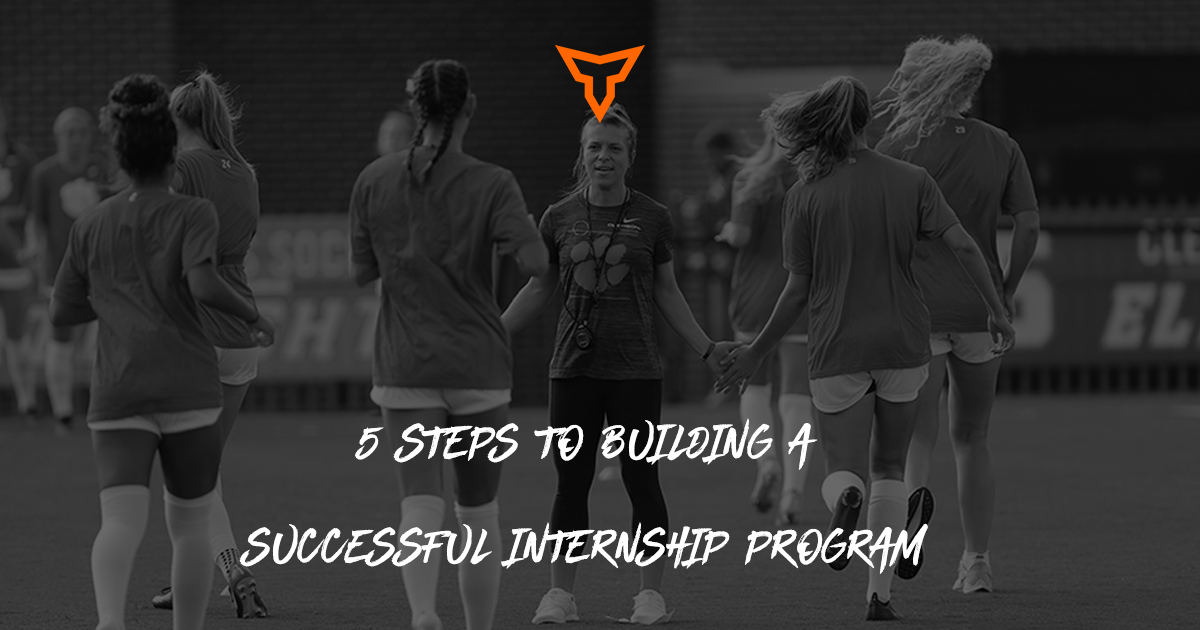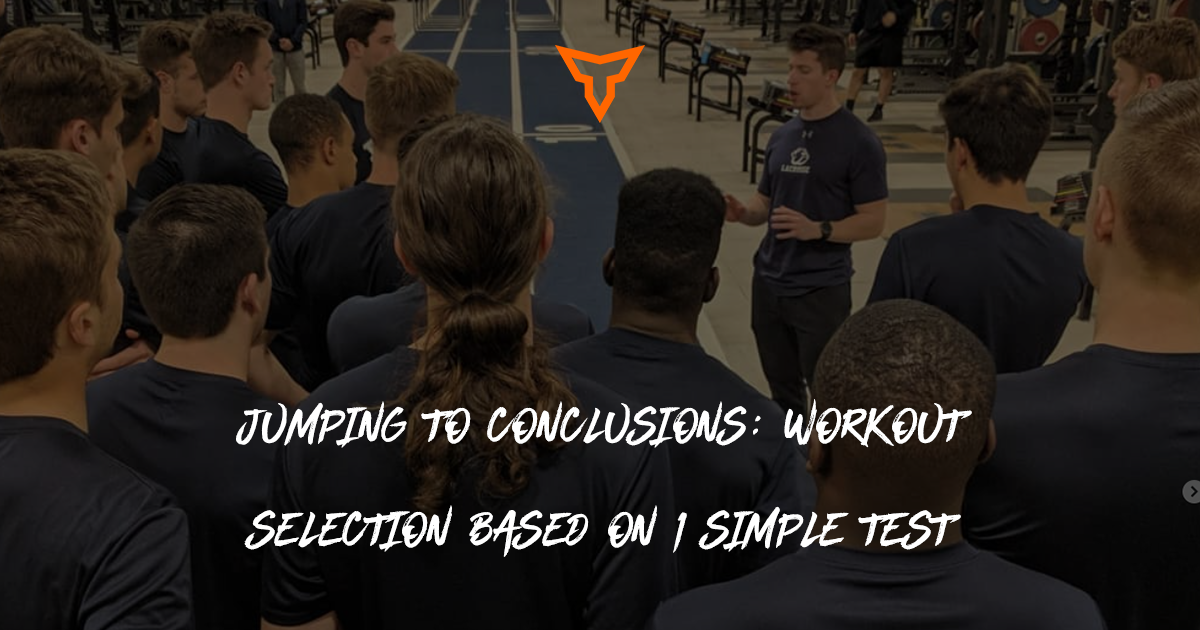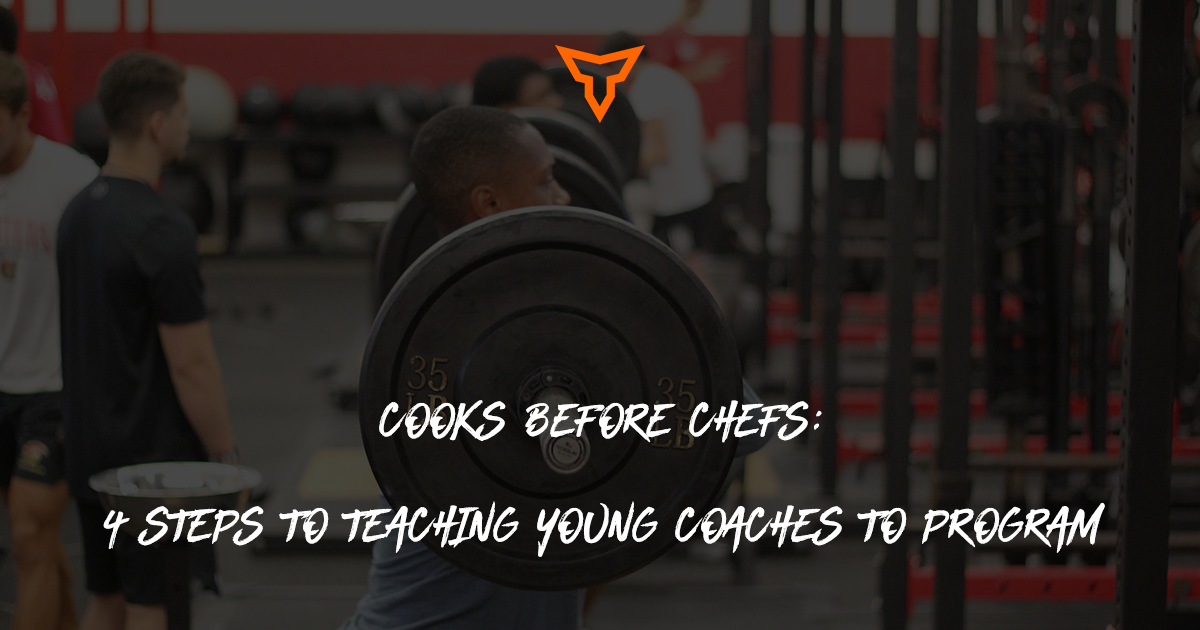It is Time to Change Up Your Programming
We all have exercises that we truly believe in and program quite frequently. Whether it is a Back Squat, Trap-Bar Deadlift, Power Clean, or Bench Press, I am willing to bet that if I scour through the programs you have written over the last few years there would be some mainstays that are always present (or only leave for a brief stint).
There is nothing wrong with that at all. After all, the human body can only move so many ways and the list of good bang-for-your-buck exercises that are supported by research is truly not that long. But after a while, you might be looking to change things up to get a new stimulus because your athletes are plateauing in that exercise or they simply are begging you to change things up because they are sick of front squatting every single Monday for the last year (been there, done that!).
While having some “old faithful” exercises is great, the human body will eventually adapt to the stress placed upon it and pretty soon you won’t simply be able to “just add 5 lbs to the bar”. As I have been told many times before and I am sure you all have as well, “Everything works until it doesn’t”. So, if your programs have stalled a bit, how do we jumpstart them again? I will dive into 5 different ways to keep doing what you are doing, but give it a facelift so the gain train can keep rolling!
#1: Speed/Velocity Based Training
One of the biggest changes I have made in our weight room over the last 2 years is purchasing some Velocity Based Training (VBT) units. Not only does this allow me to have some new data to collect for testing (see my article on that here), but it also gives a brand new challenge to training for our athletes. When I first got the VBT units (Linear Positional Transducers, LPTs), the only thing I did with them for the first 2 months was put them at each rack and tell athletes to “play around with them and see what speeds you can hit with your normal working weights”. A couple of my favorite feedback comments that I got after the first few sessions from athletes were:
“This is great, it feels like playing a video game!”
“We’ve been doing the same workout the last few weeks, but I am more sore now than I was when we first started since I’m actually pushing as fast as I can”
So while I did not have to change the exercise, by incorporating speed as the end goal, it got a new stimulus and made the training “different” for everyone.
Now I prescribe velocity zones for my athletes, especially in-season, to taper and peak them for playoffs. That way we can keep doing Front Squats, but our velocity zones go from 0.5 m/s to 0.6 m/s to 0.7 m/s. But each week or 2 when I make that small adjustment, it forces that athlete to change the weight and gives it a whole new feel for them (with potentially a different adaptation as well).
Image 1: VBT Units can create a fun and engaging environment and make training like a game!
#2: Tempo
While talking about speed, let’s look at another way to change things up, especially if you do not have VBT units or the budget to purchase some anytime soon. I am talking about Tempo. Often, VBT is synonymous with going fast, and tempo with going slower or pausing. However, VBT is just measuring the speed (which could be slow or fast) and Tempo refers to how quickly you want the bar moved during each contraction (eccentric, isometric, concentric). So VBT is how we measure tempo (to keep it simple).
Anyway, with Tempo, you can once again keep the same exercises, but drastically change the way an exercise feels and the outcome it gives. Let’s take a Bench Press for example. A normal Bench Press has a tempo of 2/0/1/1, (Ecc/Iso/Con/Iso). This means you lower the weight under control for 2 seconds (Eccentric), with no pause on the chest (Isometric) then push it up fast in 1 second (concentric), with a brief pause for 1 second at the top (Isometric) and go again for the given reps. How would the weight on the bar as well as the DOMs the next day change if we went with a 4211 Tempo? Down for 4 nice and slow to put the muscle under lots of time under tension (TUT), 2-second pause on the chest to eliminate the stretch-shortening cycle (and save most young boys’ sternums) then try and blast it up in 1 second. Much different. The increase in TUT may give your body a better hypertrophy stimulus, and the pause would allow you to work on pushing from a dead stop (and under fatigue), but we still want that bar to be cooking on the way up!
So speed can be a great way to track lifts, as well as change it up, whether you want to make your athletes go faster and build some power, or slow them down and build some meat!
Tempo can also work the other way. If you normally do 2011 Tempo, you could change to 20X1, with the X meaning Explosive. That way you are training like you would with VBT, but without measuring it. Just wanted to give a quick PSA that tempo doesn’t always have to slow things down.
#3: Implement
Now aside from changing the way the movement is performed, one of the most common ways to modify your favorite exercises without reinventing the wheel is to simply change the implement you get your athletes to use. For example, you might love doing Romanian Deadlifts with your athletes and they always use a barbell. Great exercise, a great choice. However, you can get pretty much the same stimulus with Dumbbells, a trap bar, a Landmine set-up, or Kettlebells. So while the movement is the same, the change in implementation can change the grip for your athletes which can make it feel like a breath of fresh air at times. Plus, this way you expose them to a new way to do an exercise should they ever need it.
Two examples for you from my coaching. I used to give our Men’s Basketball team Romanian Deadlifts with a Barbell but found that with most of the taller guys, sometimes it placed a little too much stress on their backs. So, I changed it to trap-bar RDLs, which is a similar stimulus. However, due to the hands being at the side, it allowed our guys to get into better positions, save the back, and hit the butt and hamstrings. Plus, one of our guards now ALWAYS uses a trap bar for RDLs, even if I switch it up to another implement. Why? Because I exposed him to it, he found it felt the best for him so he stuck with it.
The second example is from our summer training. Here at Trinity Western, most of our athletes go home to work for the summer, meaning most of them lift at fitness centers, big box gyms, or in their home set-up. Having exposed them to a variety of implements to lift with (ie. doing 1-arm rows with a barbell in the landmine instead of just dumbbells) gives them other options when they realize their home gym or fitness center only has dumbbells up to 65 lbs.
Other great implement changes are kettlebells instead of dumbbells for shoulder presses, switching from barbells to dumbbells (or vice versa) for your pressing movements (bench, incline), as well as using specialty bars for squats, like a safety squat bar. All of these allow you to change the exercise without changing the stimulus that much, provide a fresh perspective for your athletes, and teach them new ways to do things if they ever get into a pickle.
Image 2: Many different ways to skin a cat in the weight room
Another higher-level way to make adjustments to implements is to change the weight on the bar to bands or chains, which is often called accommodating resistance. To give a brief physics lesson, when you perform an exercise, say a bench press, there are aspects of the lift that feel easier (top of the movement) and those that feel harder (bottom of the movement). This is due to the lever lengths, where the weight is concerning your joints and muscles, etc. What bands and chains do is they make the easier part of the lift (the top) harder by increasing the tension of the band as it stretches or the amount of chain you push as it comes off the floor, and makes the harder part of the lift (the bottom) easier by lessening the tension of the band or unloading the weight of the chain by having them rest on the floor. So using less weight and more chains or bands, makes the whole lift feel the same level of difficulty, which also allows you to accelerate the movement through the top as the band and chain keep the bar from flying out of your hands/off your back/shoulders.
Again, this is usually termed a “higher-level” technique that for sure is fun and can create lots of engagement in your athletes, but this would not be the first variety option I would try.
#4: Grip or Stance
The fourth option is another great switch that allows you to keep it “the same” without making it the same. You can change your grip or your stance when executing a movement. What this can do is create a new challenge for the athlete, make the exercise harder (or easier), and allow them to try out a variety of positions that could be more specific to their sport or position.
A classic example is changing the grip on your chin-ups. I love chin-ups/pull-ups and they are one of those staples in my programs. However, instead of just changing reps as the only variation I give, I will program different grips throughout the year. Not only does it make it new for the athletes, but there is some different muscle engagement with different grips as well. Some options I have used with pulling grips are:
- Supinated (chin-up grip)
- Prone (pull-up grip)
- Neutral Grip
- Wide Grip (Pull-up & chin-up)
- Close Grip (Pull-up & chin-up)
- Mixed Grip
So there are 8 different grips you can use to do “the same” exercise, with a slightly different emphasis, but hit the same goal (as well as develop more robust and well-rounded backs, hands, and arms in your athletes).
Image 3: Different pull-up bars allow for different pulling grips
Other examples of various grips could be a close or wide grip on a bench press, a wide grip on an RDL (snatch grip), or even a simple change in bicep training from supinated curls, hammer/neutral curls, to prone/reverse grip curls. All effective, all slightly different enough to keep it fresh for the athletes but the same enough for you that you aren’t detracting from your program's end goal.
For stance, these could be used for lower or upper body movements. An example of a stance in the upper body is with a DB shoulder press. You could do a single arm press from a half-kneeling position, which is more stable. You can press from standing, from a split stance, or even from one leg. Each of these requires a different level of balance and core control which can create a fun challenge for you athletes, a slightly new stimulus as well, but still allows you to keep pressing overhead (if you so choose).
With lower body exercises, the stance change is also pretty straightforward. If you look at a squat, for example, you can do:
- Bilateral (ie. Front or Back Squat)
- Staggered Stance
- Split Stance (stationary like a split squat or moving like a forward lunge)
- Rear Foot Elevated
- Front Foot Elevated
- Single Leg Squat (to a box or knee to a pad like a skater squat)
So you see, the number of variations is quite large once you dive into it and you mix and match. For example, you could do a bilateral front squat, or you could keep the front rack position and move to either a staggered stance or a split stance. Or you could do any of those three with a back rack position. Once again, they will each have a slightly different target muscle, different balance and core control demands, but at the end of the day, they are all knee-dominant movements that will help enhance your athletes’ performance, so feel free to change it up once in a while and see the results. You might just find your new “old faithful”.
#5: Number of Limbs
The last way to add variety to your program is to change the number of limbs you use when performing an exercise. Now I am not talking about doing single-arm chin-ups (unless you can do one, then good for you!). This can be a simple drop from a 2-arm DB Bench to a 1-arm DB Bench. Or from Front Squat to Split Squat.
Why make this kind of change? With fewer limbs, there is a greater demand for stability on the working side, so if you are after more stability training, then this could be a good option for you. It is also more “sports specific” (or as Dr. Paul Gamble puts it, more “biomechanically similar”). Technically sports are played with one leg or one arm at a time, so it wouldn’t hurt to throw this variation in now and then to look for a little more maximization of transfer. No, if you switch from Shoulder Press to 1-Arm Shoulder Press you probably won’t go undefeated and have zero injuries (if you do let me know), but once again, it can be a great way to challenge your athletes, change things up without reinventing the wheel, and it also can make it easier for buy-in by explaining how sports are played with one arm so, in fact, 1-arm shoulder press is more specific to basketball (“How many hands do you use to shoot the ball?”).
The other added benefit of teaching your athletes these single limb variations is that sport is messy and injuries happen. But now instead of your athletes needing to take a month off because they stubbed their toe, they know they can come in a do some single leg work or hit some single arm rows if they messed up their shoulder on the weekend. Always want to provide athletes with as much knowledge and information as possible so we can create autonomous monsters!
Conclusion:
So there you have it, five ways to change old faithful without getting rid of old faithful. At the end of the day, good solid training is good solid training, and the most important thing is that your athletes and progressing and getting better. There is no need to add variety for variety’s sake, but if you find that your athletes are plateauing or begging for a change, these are five of the best ways to do so in my opinion. And the beauty of it is, most of these variations will help with the base exercise anyway. Getting a stringer in the DB Bench will help with your BB bench. Getting more solid in a Split Squat can help your Front Squat strength and positioning. So don’t think of this as a tradeoff, but more like a slight detour so when you do go back to your staple exercise, your athletes will be eager, fresh, and stronger (which will help them get even more out of that exercise anyway!)
Subscribe to our blog
Subscribe to receive the latest blog posts to your inbox every week.
Related posts

5 Steps to Building a Successful Internship Program

Jumping to Conclusions: Workout Selection Based on 1 Simple Test


